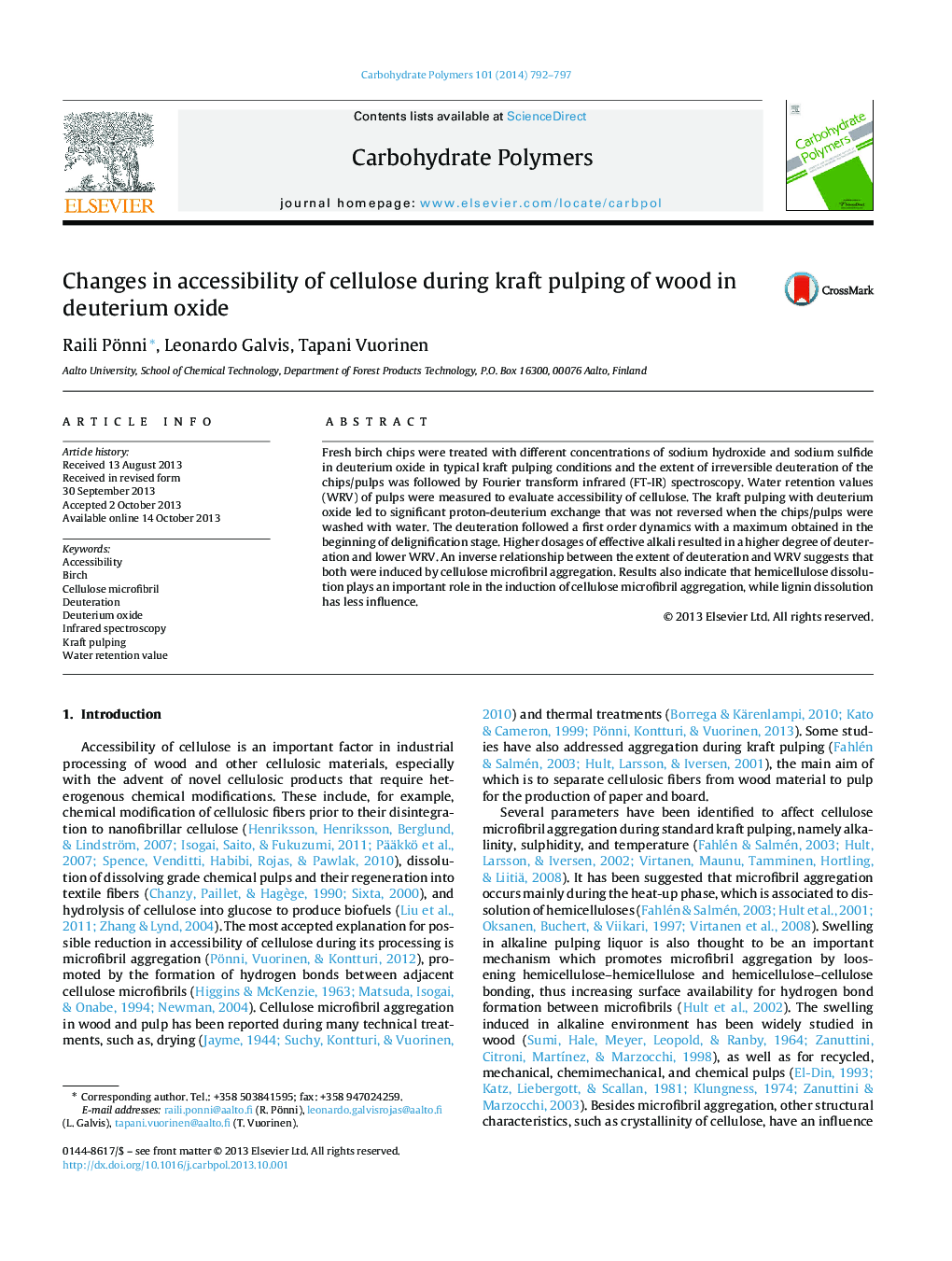| Article ID | Journal | Published Year | Pages | File Type |
|---|---|---|---|---|
| 7793199 | Carbohydrate Polymers | 2014 | 6 Pages |
Abstract
Fresh birch chips were treated with different concentrations of sodium hydroxide and sodium sulfide in deuterium oxide in typical kraft pulping conditions and the extent of irreversible deuteration of the chips/pulps was followed by Fourier transform infrared (FT-IR) spectroscopy. Water retention values (WRV) of pulps were measured to evaluate accessibility of cellulose. The kraft pulping with deuterium oxide led to significant proton-deuterium exchange that was not reversed when the chips/pulps were washed with water. The deuteration followed a first order dynamics with a maximum obtained in the beginning of delignification stage. Higher dosages of effective alkali resulted in a higher degree of deuteration and lower WRV. An inverse relationship between the extent of deuteration and WRV suggests that both were induced by cellulose microfibril aggregation. Results also indicate that hemicellulose dissolution plays an important role in the induction of cellulose microfibril aggregation, while lignin dissolution has less influence.
Keywords
Related Topics
Physical Sciences and Engineering
Chemistry
Organic Chemistry
Authors
Raili Pönni, Leonardo Galvis, Tapani Vuorinen,
